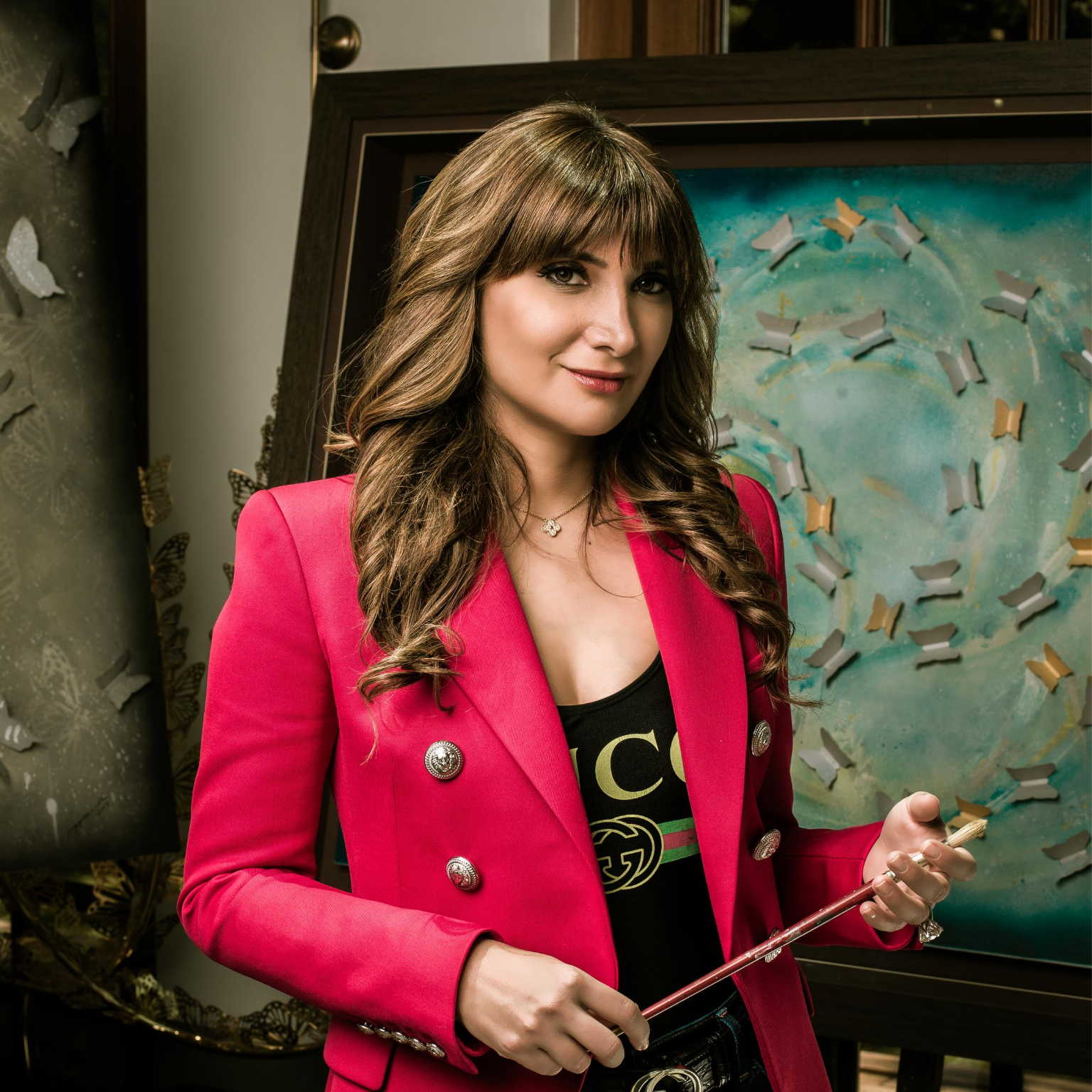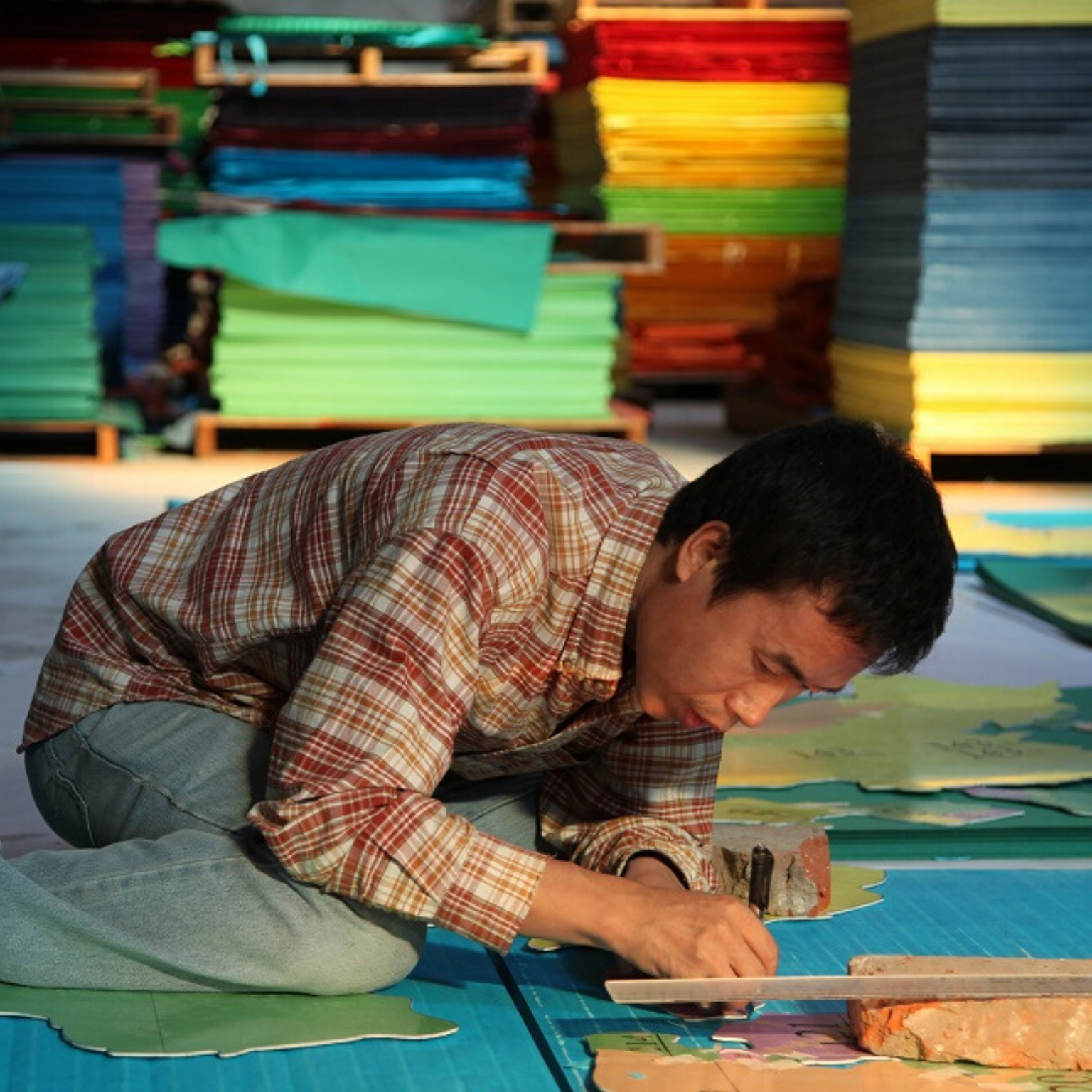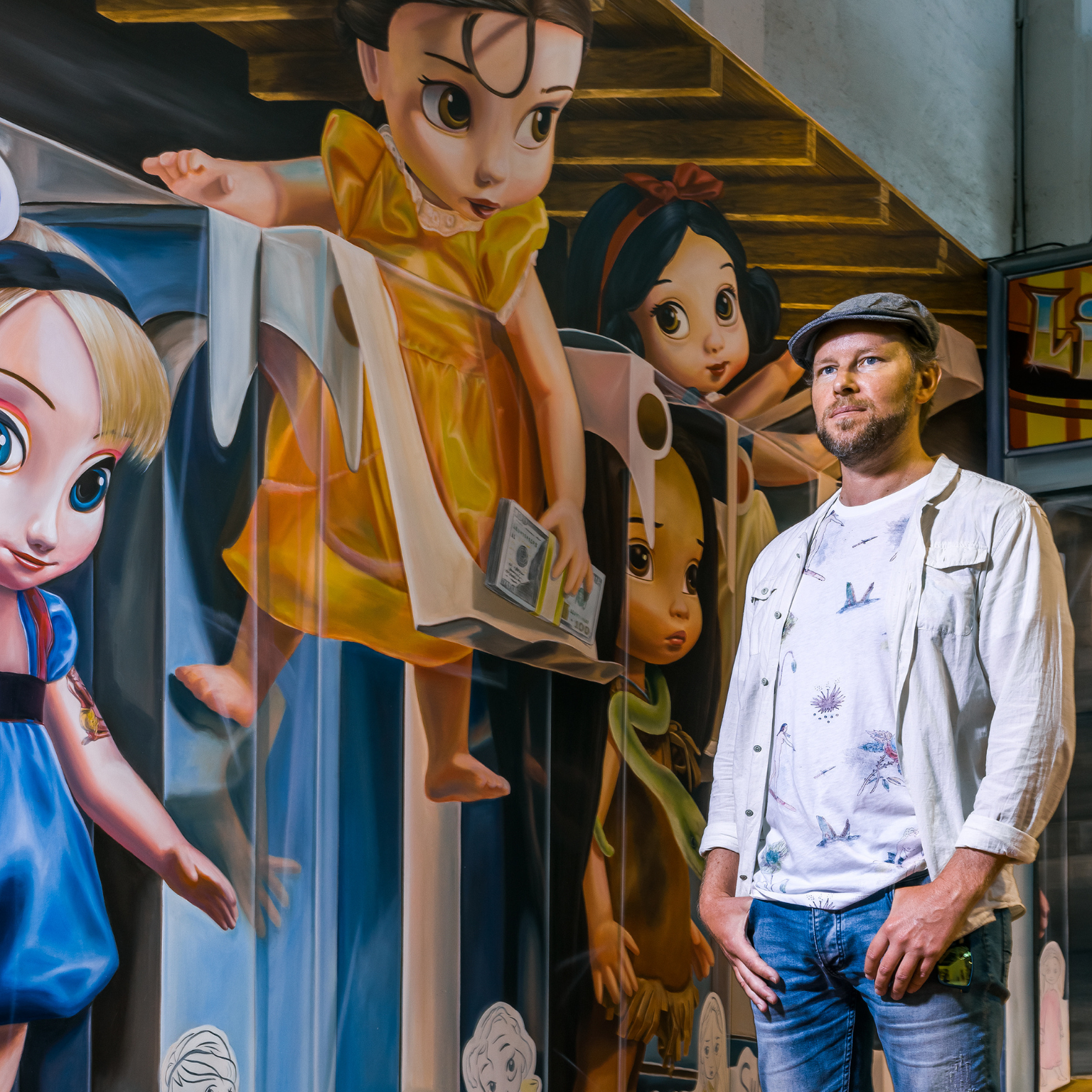Michelle Poonawalla, artist from India. Photography © M. Poonawalla
1.In your opinion what is the role of a museum?
They allow art or culture to be seen by the general public of all ages, all societies and all incomes. A museum promotes art, culture and educates our populations both young and old.
I think museums also can act as voices for change, or encourage questions and debate by showing works such as Olafur Eliasson’s work around climate change. In this sense museums educate the spectators on the subject they see and encourage viewers to question the wider world.
2.What are your favorite museums in the world? Why?
I grew up in London and I have fond memories of visiting many museums as a child. The Tate, the V&A, the National Portrait Gallery etc. It is hard to pick a favourite; they all hold different memories of visits, and artworks which have influenced me.
It is great to take my kids nowadays when I am in London, and I had been really looking forward to seeing Yayoi Kusama’s retrospective at Tate Modern celebrating their 20th Anniversary – hopefully I’ll still make it after lockdown.
Outside of London it is a little cliched but the Louvre has always held a special place for me as such an iconic museum and institution. And of course in India Kiran Nadar’s Museum of Modern Art in Delhi always has amazing exhibitions of Indian work and I love the Dr. Bhau Daji Lad Museum in Mumbai.
3.How important are social networks in your business? And which platform do you prefer and why.
As a young artist social network provides viewership from all over the world. It connects artists to not only curators, galleries but also to buyers. I find Instagram and Twitter are a worldwide ocean.
Today everyone and anyone is on social media and is able to connect very easily to people across the globe eg. On Instagram I got a message from the curator of the Elephant Parade India, which I then went on to collaborate with.
4.Due to the coronavirus emergency, how have you changed your business on social networks?
Lockdown has been difficult for everyone but it has given me a lot of time to focus on my practice. I’ve worked on a huge range of projects, some like 21 Migrants have directly addressed the crisis whilst others have been a more meditative practice for me.
21 Migrants was a sketch which I hope portrays the human tragedy of the impact of the coronavirus in India which I sold to raise money for charity. I had also worked on a series of masks for Art for Concern which again were sold to raise money for covid relief funds. Colours of Life is a new series I worked on which was influenced by nature and many of the things I could see around me during lockdown like the Gulmohar Tree. The works are done in thick impasto style in bright colors – which I hope reflect a sign of positivity and vibrancy as we look to the future.
I’m also very excited to have produced a collaboration with Italian wallpaper brand Inkiostro Bianco. This started just before lockdown and it was a challenge collaborating and sending designs back and forth during the lockdown period.
It is the first time I have worked on something more design or interiors focussed and I’ve produced a series of wallpapers for their Goldenwall collection. It was a exciting working on a very different medium and project and of course my two designs, The Flutter and Misty Flutter, take the silhouette of a butterfly.
Finally I’m working on some new installations which address environmental issues and water scarcity which are very important for me. I don’t want to share too much at this stage but it will be a large scale installation bringing together sound, touch, feel senses in an immersive space.
5.To create greater engagement among museums, artists and professionals, do you have any advice for cultural projects such as #MuseumWeek?
#MuseumWeek is a great initiative. It is obviously a very difficult time for museums around the world with ongoing funding cuts but I think projects like #MuseumWeek are so important to highlight what museums do and how important they are for everyone.
As with everyone museums are having to explore and increase what they do in the digital space and I certainly think this is a good opportunity to look at what they can offer, how they can share their resources with more people and wider audiences. The Tate or the Met, for example, have such great kids sections on their website with activities and things to engage children and get them interested in art and culture.
I’d like to see more museums doing things like this. Especially in India where you see so many museums with such great collections, but they aren’t always as easy to engage with as they could be.
Interview by Fabio Pariante, journalist
MORE
Michelle Poonawalla on social networks: Instagram – Facebook – Twitter
Michelle Poonawalla is an Indian visual artist with a degree in Interior Design from American College of London. Her artistic technique is based on innovative techniques and technologies from canvas and mixed-media, to digital mapping and stop-motion technology.
After the first exhibition in 2016 at the Gateway School in Mumbai, among the most important: Khushi – India On Canvas in conjunction with Sotheby’s, New Delhi – 2017, India Art Story, Kolkata – 2017, Elephant Parade India, New Delhi, Mumbai and London – 2017 / 2018, What if you fly, an exhibition dedicated to the Vis A Vis Gallery, New Delhi and Spazio Gallery, Pune – 2018. Born Free at Jehangir Art Gallery, Mumbai – 2018, and Introspection a digital installation shown as collateral project at Kochi-Muziris Biennale 2018, as a guest exhibition at Alserkal Avenue, Dubai – 2019, and at START Art Fair, London’s Saatchi Gallery – 2019.
Poonawalla’s works are recognizable by the butterflies that have always been her signature. She lives between India and the UK.



